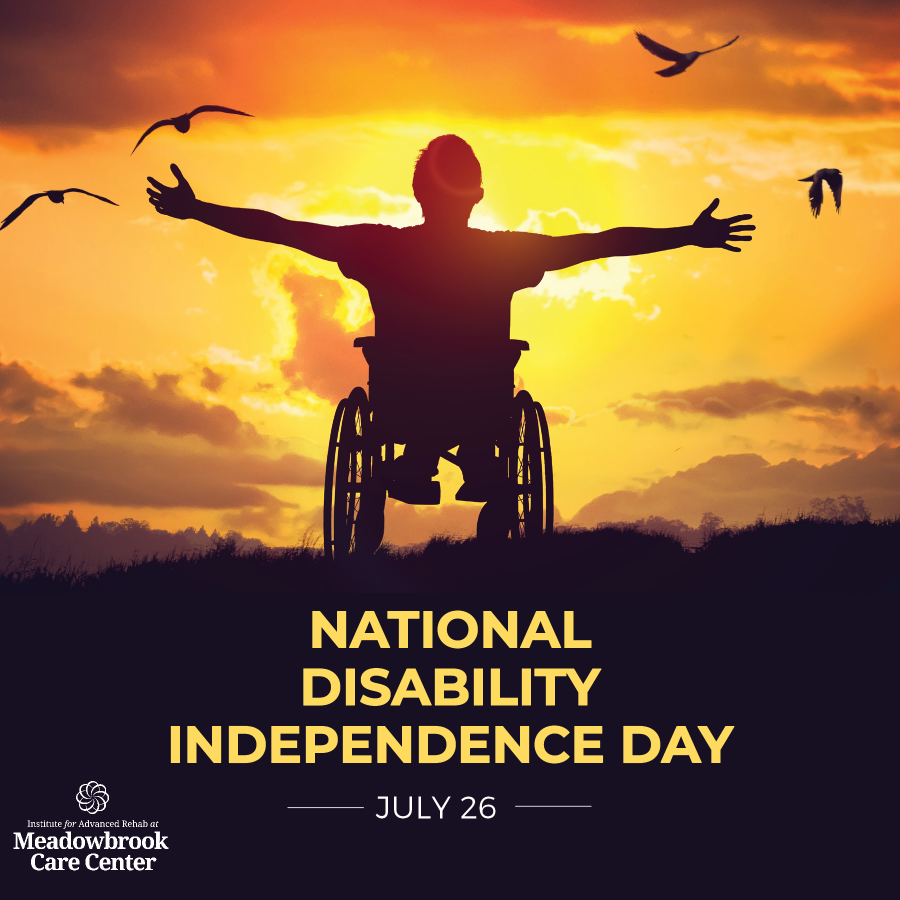What Is Disability Independence Day? Empowerment Guide

Disability Independence Day, celebrated on July 26th, marks a pivotal milestone in the history of disability rights. It commemorates the anniversary of the Americans with Disabilities Act (ADA) signing in 1990, a landmark legislation that has profoundly impacted the lives of individuals with disabilities in the United States and beyond. This empowerment guide aims to delve into the significance of Disability Independence Day, its historical context, and the ongoing quest for full inclusion and accessibility.
Historical Evolution of Disability Rights
The journey towards disability independence has been long and arduous, filled with challenges and triumphs. Prior to the ADA, individuals with disabilities faced significant barriers in accessing basic rights and services, including education, employment, healthcare, and public accommodations. The lack of accessibility and accommodations in physical environments, coupled with societal stigma and discrimination, severely limited the participation of people with disabilities in mainstream society.
The disability rights movement, however, has been a powerful force for change. Inspired by the civil rights movement of the 1960s, disability activists began to organize and advocate for their rights. A pivotal moment came in 1977 with the 504 Sit-ins, where disability activists occupied federal buildings to demand the implementation of Section 504 of the Rehabilitation Act of 1973, which prohibited discrimination against individuals with disabilities in programs or activities receiving federal funding.
The Americans with Disabilities Act (ADA)
The ADA was a culmination of these efforts, signed into law by President George H.W. Bush on July 26, 1990. This comprehensive civil rights law prohibits discrimination against individuals with disabilities in all areas of public life, including jobs, schools, transportation, and all public and private places that are open to the general public. The ADA ensures that people with disabilities have equal opportunities to participate in the mainstream of American life, providing protections in employment, public services, public accommodations, and telecommunications.
Celebrating Disability Independence Day
Disability Independence Day is a celebration of the ADA’s enactment and the progress made towards achieving equal opportunities for individuals with disabilities. It is also a reminder of the work still needed to fulfill the promise of the ADA and to address the barriers that continue to exist. Communities across the United States mark this day with various events, including parades, rallies, exhibitions, and seminars, aimed at promoting awareness, inclusion, and accessibility.
Empowerment Through Accessibility
At the heart of Disability Independence Day is the notion of empowerment through accessibility. Accessibility is not merely about physical ramps or braille signage but encompasses a broad range of measures to ensure that individuals with disabilities can fully participate in society. This includes digital accessibility, ensuring that websites, apps, and digital services are usable by everyone, as well as social and cultural accessibility, where the needs and perspectives of people with disabilities are integrated into community life.
Ongoing Challenges and Future Directions
Despite the significant advancements brought about by the ADA, challenges persist. Many public and private spaces remain inaccessible, and discrimination against individuals with disabilities continues in various forms. The digital world also presents new challenges, with many websites and digital services failing to meet accessibility standards.
Looking forward, the quest for disability independence involves continued advocacy for stricter enforcement of the ADA, the development of more inclusive technologies, and a cultural shift towards recognizing and valuing disability as an aspect of human diversity. Disability Independence Day is not just a celebration of past achievements but a call to action for the future, ensuring that the principle of equal opportunity is a reality for all.
FAQ Section
What does the Americans with Disabilities Act (ADA) do?
+The ADA is a civil rights law that prohibits discrimination against individuals with disabilities in all areas of public life, including jobs, schools, transportation, and all public and private places that are open to the general public.
How is Disability Independence Day celebrated?
+Communities celebrate Disability Independence Day with various events such as parades, rallies, exhibitions, and seminars aimed at promoting awareness, inclusion, and accessibility.
What are some ongoing challenges for disability independence?
+Despite progress, challenges persist, including inaccessible public and private spaces, discrimination, and the need for stricter enforcement of the ADA, as well as ensuring digital accessibility and social inclusion.
Conclusion
Disability Independence Day is a testament to the power of advocacy and the importance of inclusive legislation. As we celebrate this milestone, we must also acknowledge the work that remains to be done. Empowering individuals with disabilities and promoting a culture of accessibility and inclusion are not just moral imperatives but essential for creating a society that values and leverages the diverse talents and contributions of all its members. By understanding the history, celebrating the progress, and addressing the challenges, we move closer to a future where disability independence is not just a dream but a lived reality for all.
